As an upright bassist, you know that the secret to achieving a rich, beautiful tone lies not only in your technique but also in the proper maintenance of your instrument. One crucial aspect of upright bass care is maintaining the correct bow tension. A well-tensioned bow allows for optimal sound production and ease of playability, while a bow that is too loose or too tight can hinder your performance. In this article, we’ll dive into the importance of upright bass bow tension and provide you with a step-by-step guide on how to tighten your bow to perfection.
The Importance of Proper Bow Tension
Bow tension refers to the tightness of the bow hair, which directly affects the sound and playability of your upright bass. When the bow hair is too loose, it can result in a weak, scratchy sound and difficulty in controlling the bow. This is especially noticeable when trying to play legato passages or sustained notes. On the other hand, when the bow hair is too tight, it can cause a harsh, brittle tone and make it harder to execute smooth bow changes or achieve a bouncy spiccato stroke.
Finding the perfect balance in bow tension is crucial for producing a warm, rich sound and allowing for a comfortable playing experience across various techniques. A properly tensioned bow will respond well to different playing styles, from long, lyrical melodies to lively, staccato rhythms.
When to Adjust Your Bow Tension
Knowing when to adjust your upright bass bow tension is just as important as knowing how to do it. Here are some signs that show it’s time to tighten or loosen your bow:
- New bow hair: If you’ve recently had your bow rehaired, it’s essential to adjust the tension to your preferred level.
- Changes in humidity: Humidity can affect bow hair tension. In high humidity, the hair may stretch and become too loose, while in low humidity, it may contract and become too tight.
- Difficulty playing: If you find it challenging to control the bow or achieve the desired sound, particularly when trying specific techniques, it may be due to improper bow tension.
- Visual cues: Take a close look at your bow. If the hair appears too slack or too taut, it’s time to make some adjustments.
Tools You'll Need
Before we dive into the step-by-step guide, let's ensure you have the necessary tools:
– Bow tension adjuster (usually found at the end of the bow stick)
– Soft cloth or cleaning pad
– Rosin
Step-by-Step Guide to Tightening Your Upright Bass Bow Tension
Now that you have your tools ready, follow these steps to achieve the perfect bow tension:
Step 1: Loosen the tension adjuster
Start by turning the tension adjuster counterclockwise to loosen the bow hair slightly. This will give you room to work with and prevent over-tightening.
Step 2: Clean the bow stick and hair
Using a soft cloth or cleaning pad, gently wipe down the bow stick and hair to remove any rosin buildup or debris. A clean bow will allow for a more exact assessment of the tension.

Step 3: Tighten the tension adjuster
Slowly turn the tension adjuster clockwise to tighten the bow hair. As you tighten, keep an eye on the gap between the bow stick and hair. A general rule of thumb is to aim for a pinky's width of space between the stick and the hair at the midpoint of the bow.
Step 4: Test the tension
Once you've adjusted the tension, test the bow by playing a few notes on your upright bass. Pay attention to the sound quality and the feel of the bow in your hand. If the tension feels too loose or too tight, make small adjustments until you find the perfect balance. Try playing passages that require different techniques, such as legato and spiccato, to ensure the tension works well for your playing style.
Step 5: Fine-tune and rosin
After finding the ideal tension, make any final micro-adjustments as needed. Advanced players may want to experiment with slightly different tensions to suit specific musical passages or playing styles. Once you're satisfied, apply a light layer of rosin to the bow hair to ensure proper grip and sound production.
Troubleshooting Common Bow Tension Issues
Even with proper bow tension, you may encounter some issues while playing. Here are a few tips for troubleshooting common problems:
– Uneven tension: If some areas of the bow feel tighter or looser than others, the hair may need to be redistributed. Loosen the tension completely and gently comb through the hair with your fingers to even it out before retightening.
– Bow bouncing: If your bow tends to bounce or skitter across the strings, the tension may be too loose. Tighten the bow slightly and focus on applying a bit more pressure with your index finger as you play.
– Difficulty playing softly: If you struggle to play quietly with a well-tensioned bow, the issue may lie in your technique. Practice using less bow pressure and speed to achieve a softer sound.

Conclusion
Mastering the art of upright bass bow tension is essential for any serious bassist. By following this step-by-step guide and regularly checking your bow tension, you’ll be able to maintain optimal sound quality and playability. Remember, the perfect tension may vary slightly depending on personal preference and playing style, so don’t be afraid to experiment and find what works best for you.
As you continue your upright bass journey, consider exploring the comprehensive online courses offered by Practicing Musician. Their free, video-based lessons cover a wide range of topics, including instrument maintenance and bow technique, to help you become a well-rounded bassist. For more information on the parts of your upright bass and how to properly store it, check out these helpful videos:
Check out our blogs on The Ultimate Guide to Replacing Your Upright Bass Strings and The Ultimate Guide to Cleaning Your Upright Bass
Getting To Know : Parts Of Your upright bass
Putting Your Upright Bass Back In Its Case








Leave A Comment
You must be logged in to post a comment.